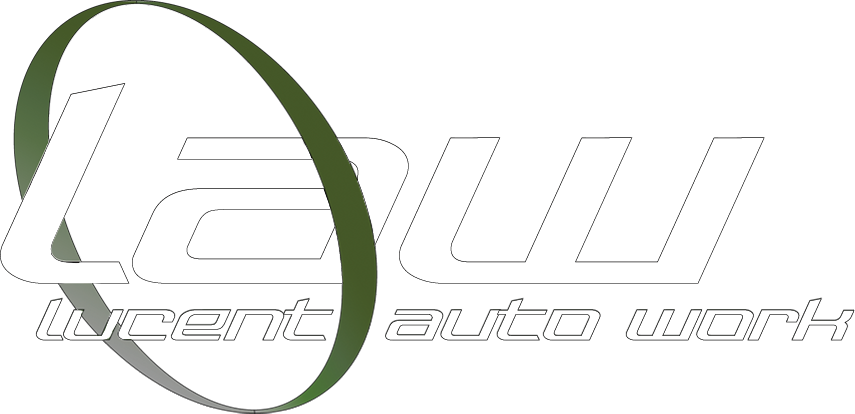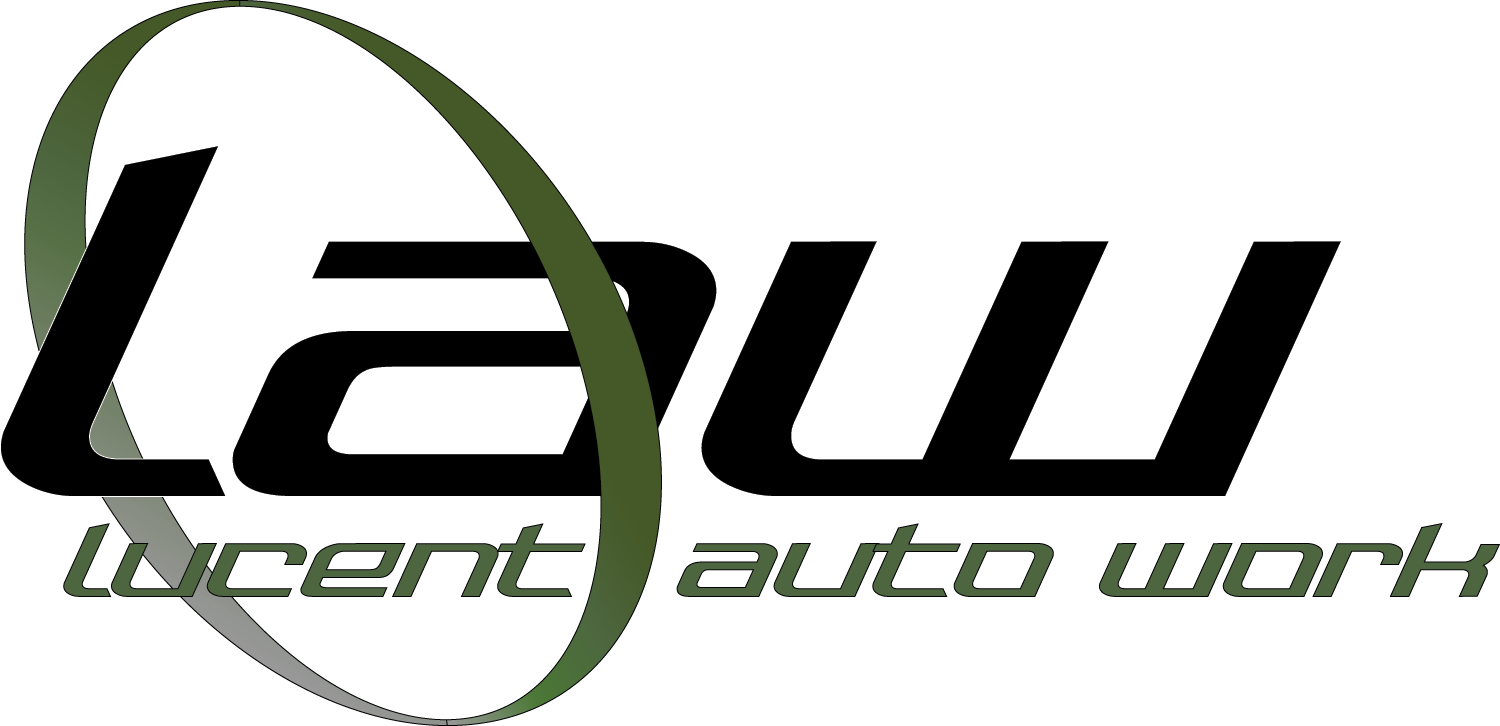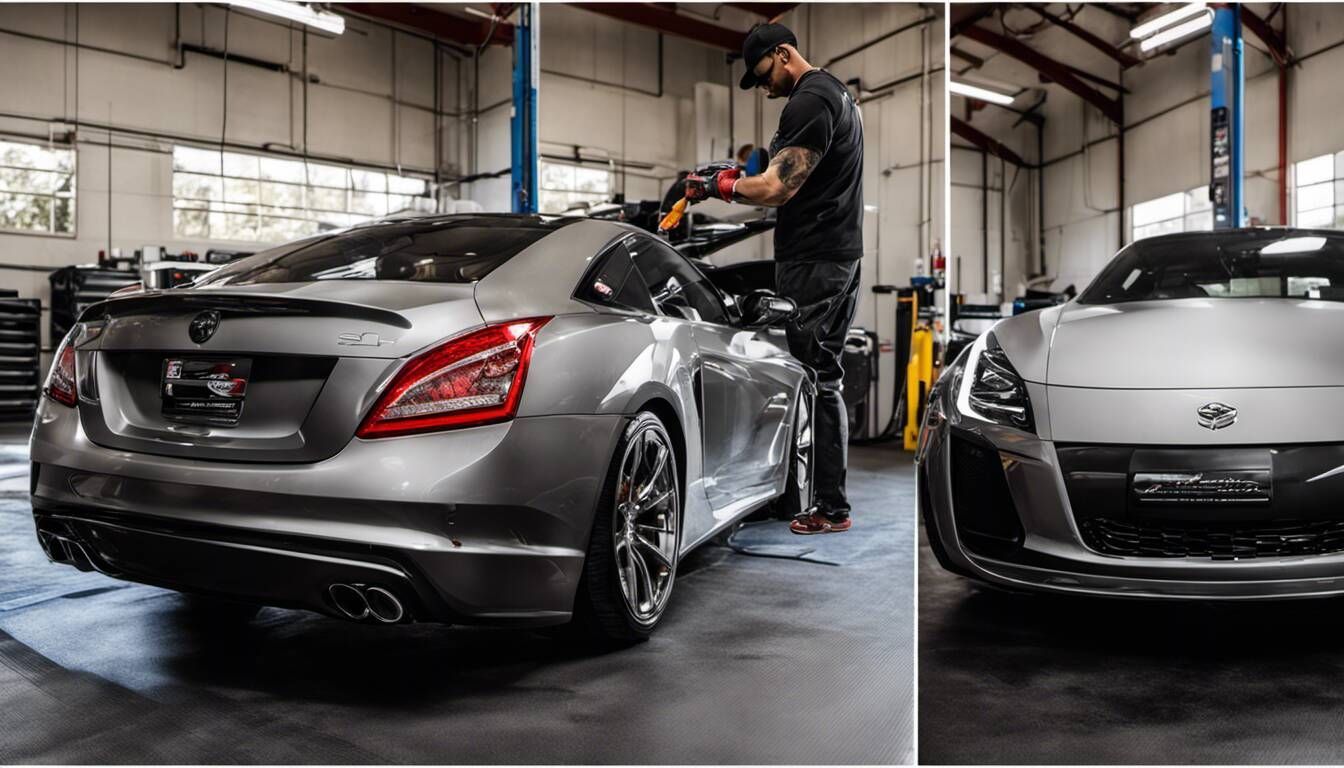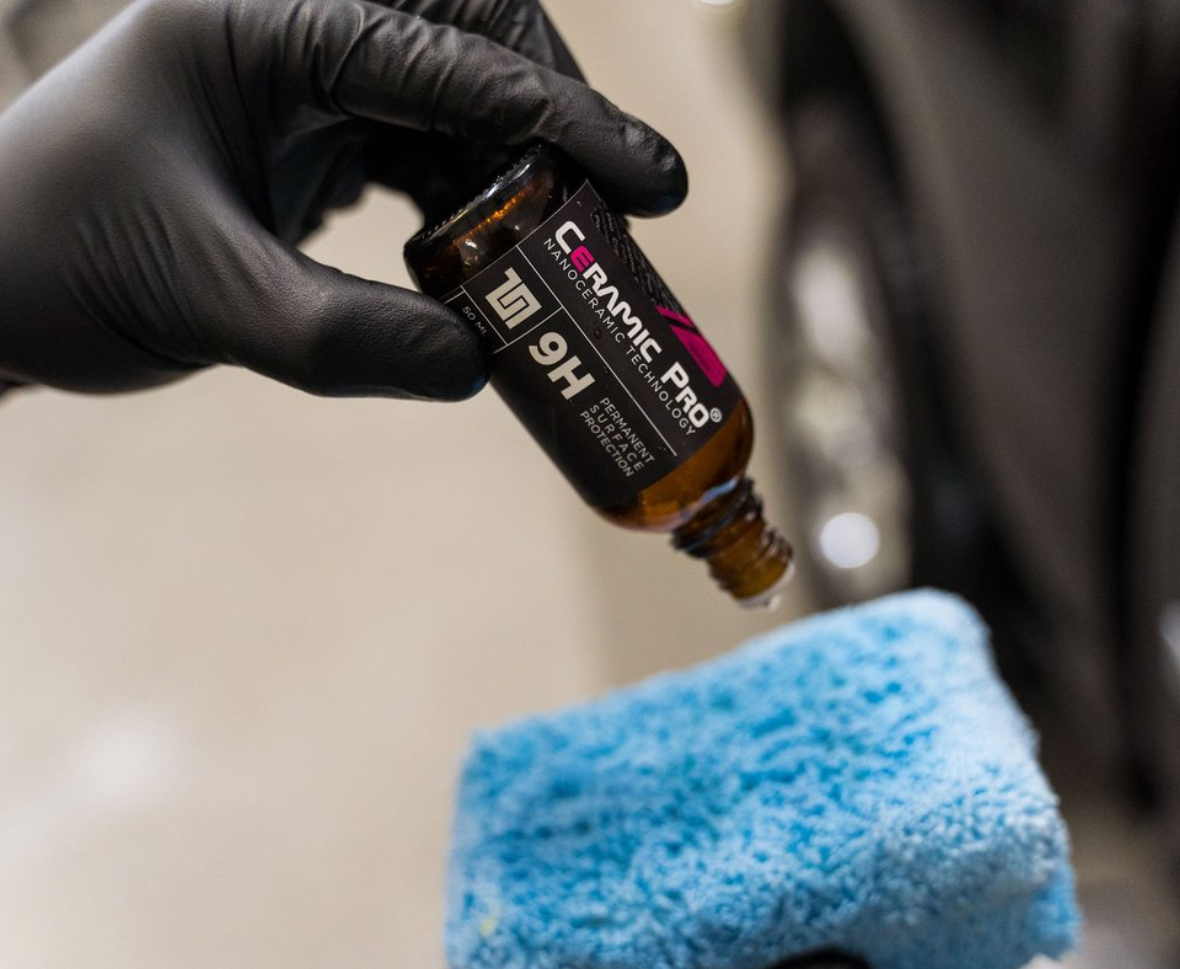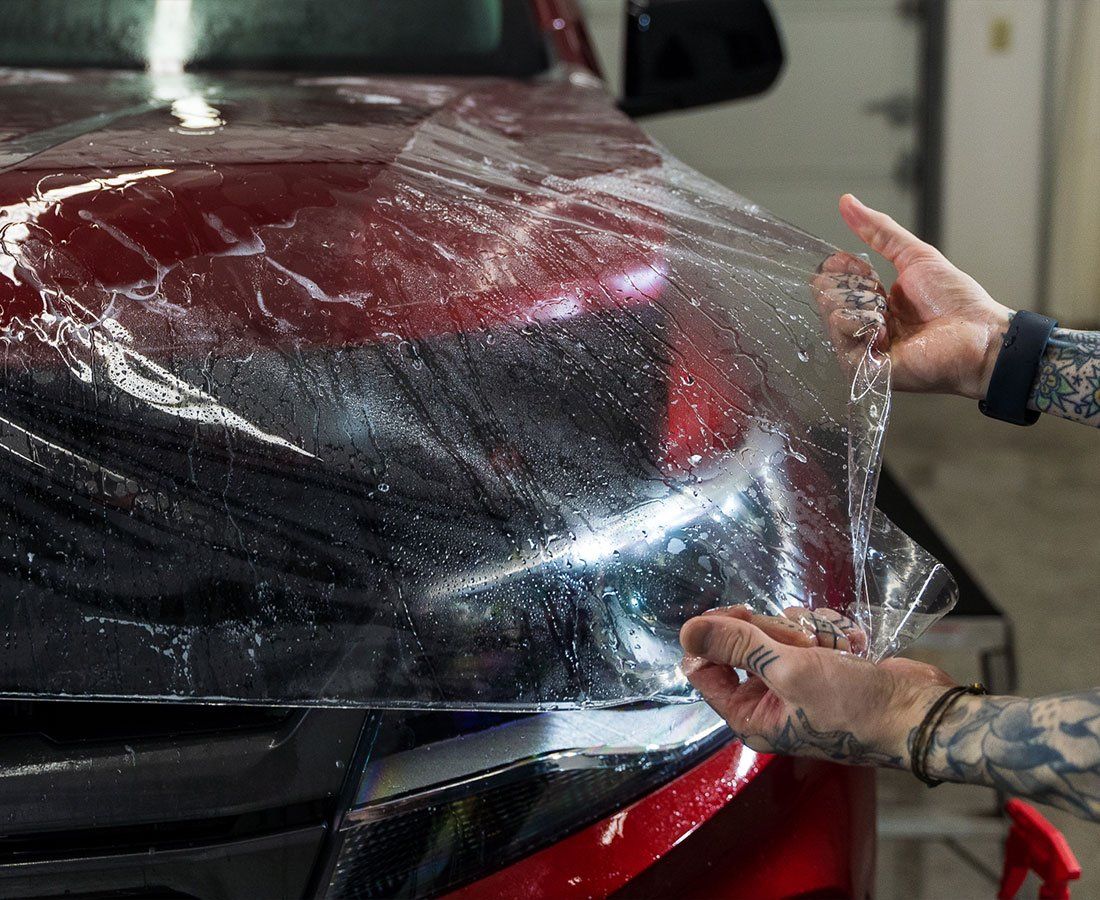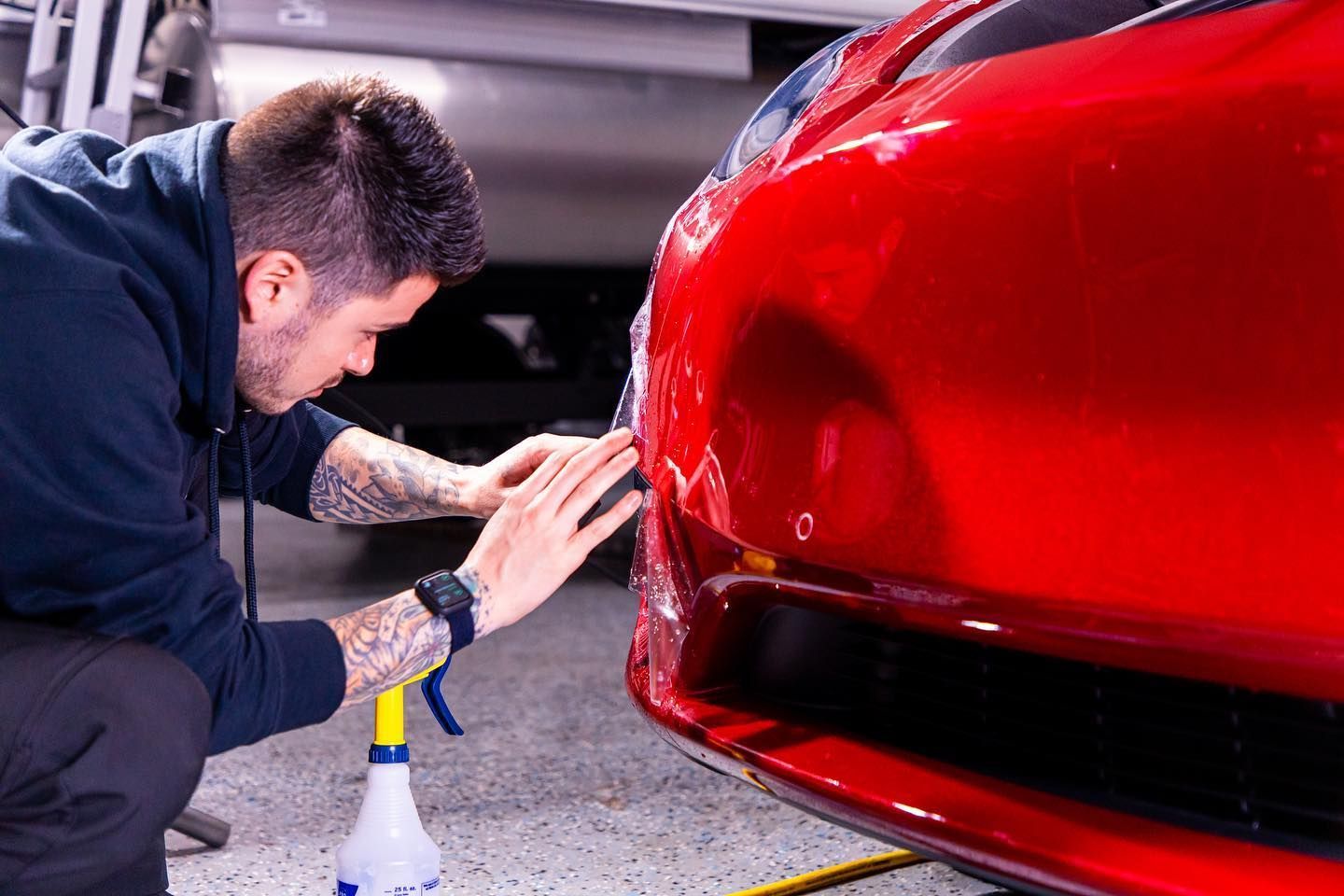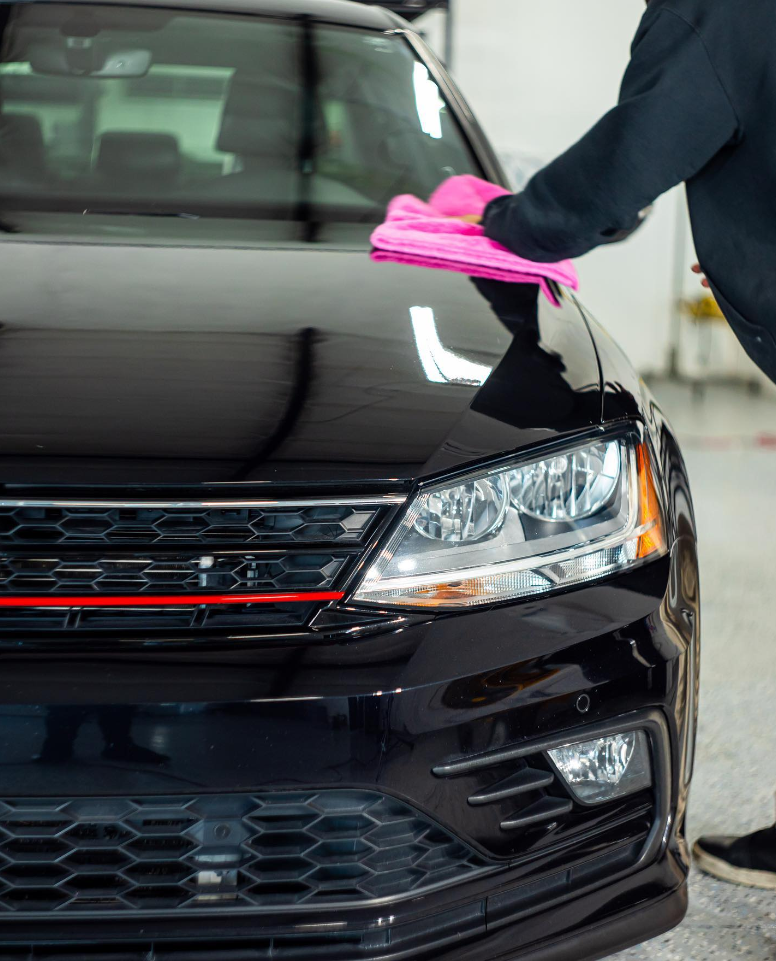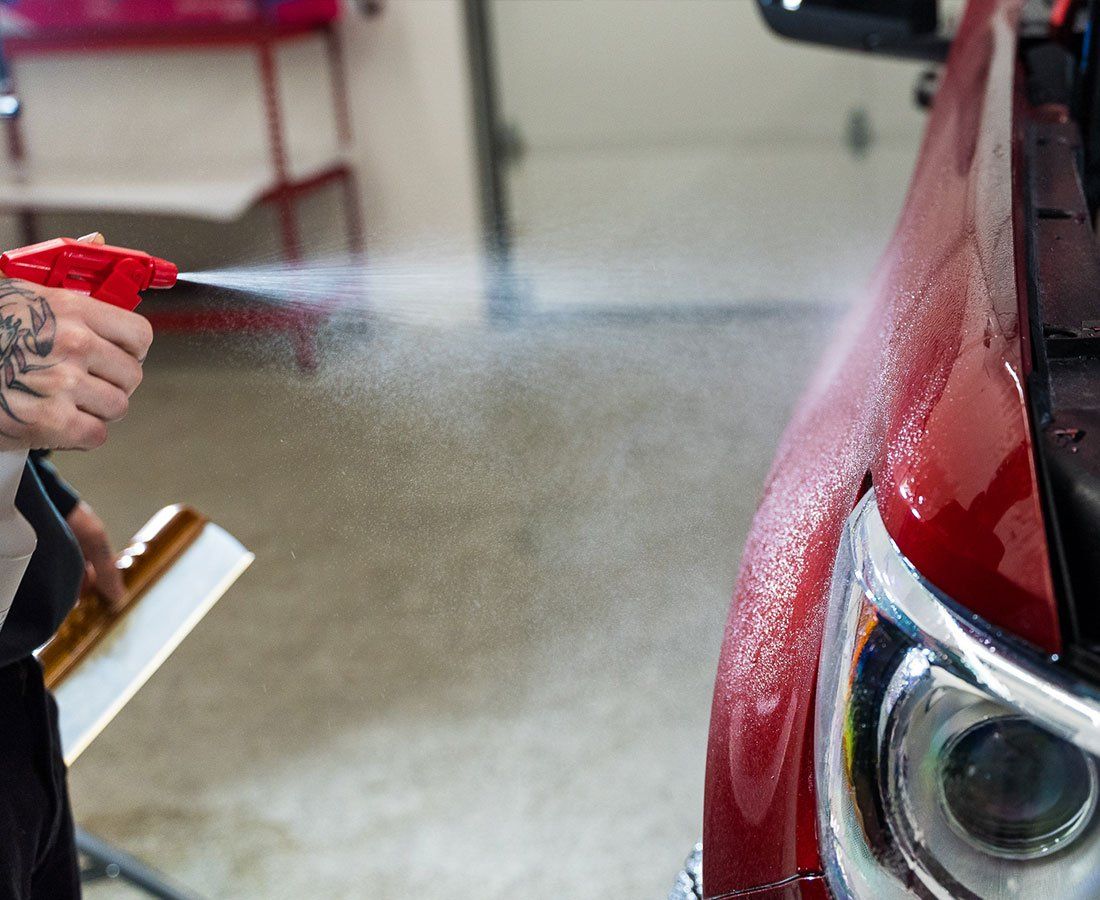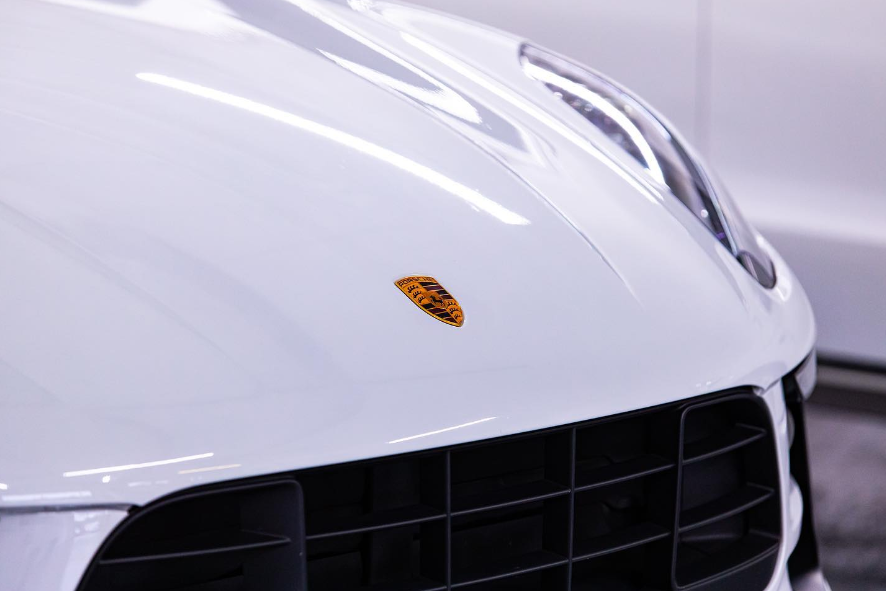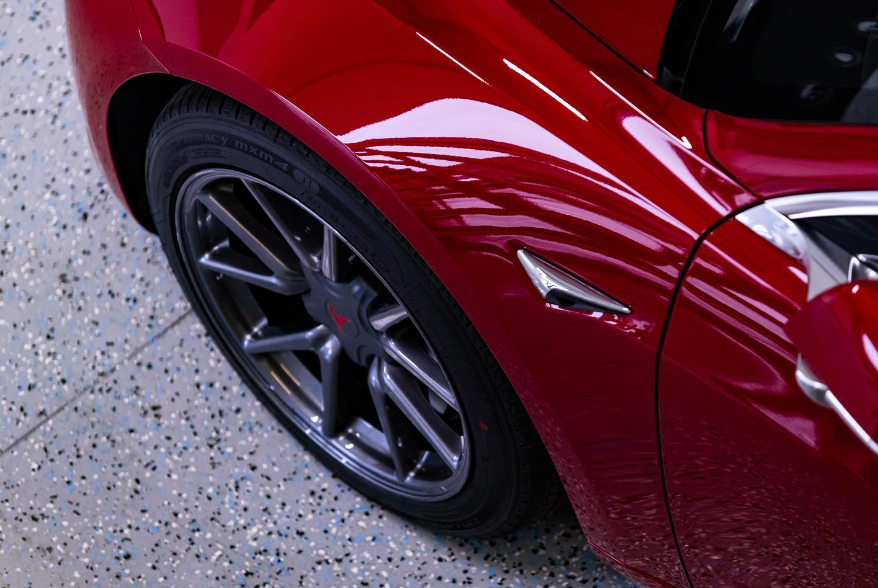Imagine gliding your fingers across a sleek, shiny surface that impeccably reflects the clear blue sky. That's the sensation of touching a car with a perfectly corrected and polished paint job. In this blog, we take you on an insightful journey into the world of paint correction, which can dramatically enhance your car's paint gloss.
Understanding and employing these techniques will not only improve the appearance of your vehicle to near showroom condition, but it may also significantly increase its value. If you have ever wanted your car to shine like new, read on!
Enhancing Your Car's Paint Gloss With Paint Correction
Paint correction is a process used to remove imperfections and restore a car's paint finish to like-new condition. By using specialized tools and techniques, professional detailers can effectively eliminate swirl marks, scratches, and other defects that cause your car's paint to appear dull or lackluster.
This process enhances the color depth and shine of your car's paint job, making it look brand new again.
It is a game-changing automotive process that dramatically improves the gloss of vehicle paint. Experts like those at Lucent Auto Work in Tacoma, Washington, use cutting-edge techniques to remove defects like swirl marks, holograms, and scratches, restoring the paint to its original clarity.
Careful abrasion removes a tiny layer of clear coat to reveal a flawless surface below. The finished product is polished to an even higher level of perfection, resulting in a dazzling, luminous effect that will give your car a new lease on life.
Understanding Paint Correction
Paint correction is a meticulous process used to restore and enhance a car's paint finish, bringing it back to its former glory.
Swirl marks, scratches, holograms, oxidation, and water spots are just a few examples of the various flaws that can damage a vehicle's paint over time.
These flaws not only detract from the car's overall appearance, but they can also weaken the protective clear coat and expose the paint to further damage. Skilled detailers use a combination of cutting-edge tools and high-quality products to address these issues.
The process begins with thoroughly washing the vehicle to remove dirt and grime. Next, a clay bar is used to eliminate any embedded contaminants that cannot be removed through regular washing alone.
By creating an ultra-smooth surface, the clay bar prepares the paint for correction.
Following preparation, the detailer carefully selects specific compounds and polishes based on the severity of the defects. Compounds are more aggressive and are used to remove deeper flaws in the clear coat.
By removing a thin layer of clear coat material, they effectively level out the uneven surface. Polishes, on the other hand, have finer abrasives and are used to refine the paint surface even further.
This step removes lighter scratches and swirl marks left by compounds.
The actual correction process involves using either a dual-action polisher or a rotary buffer along with foam or microfiber pads that vary in aggressiveness. Detailers must adhere to proper technique by applying consistent pressure and moving in small sections with overlapping motions.
Monitoring their progress through each section on a regular basis ensures that they achieve the desired results. The amazing transformation that paint correction has produced is then visible after wiping away the residue these compounds and polishes left behind. It is only at this point that one can truly appreciate the restored depth, clarity, and mirror-like finish.
However, it's important to note that achieving optimal results requires expertise and finesse, as incorrect techniques or inadequate knowledge can potentially damage the paint further.
Once the paint correction process is complete, applying a sealant or wax is recommended to lock in the restored finish and provide additional protection against environmental factors. Regular maintenance, such as routine washing and considering additional protective measures like paint protection film or ceramic coating, can help extend the longevity of the corrected paint.
By understanding these fundamental aspects of paint correction, car enthusiasts and owners alike gain insight into the intricate process required to enhance their car's paint gloss.
- According to a 2021 study by the Car Care Council, professional-grade paint correction can improve a vehicle's gloss levels by up to 40%, depending on the severity of the clear coat defects.
- According to a recent international survey by JD Power, cars with regular paint correction maintain about 10% more of their resale value than untreated vehicles.
Common Paint Defects
Before delving into the realm of paint correction, it's crucial to familiarize ourselves with the common paint defects that plague car finishes. Understanding these issues will allow us to not only identify them but also appreciate why paint correction is required. Swirl marks are fine scratches that occur on the surface of the clear coat due to improper washing techniques using abrasive materials or harsh chemicals.
These marks often become highly visible under certain lighting conditions, taking away from the overall smoothness and shine of the paint.
Scratches are more obvious than swirl marks and can result from a variety of things, including unintentional keying, brushing up against objects, or coming into contact with debris while driving. They leave a visible blemish on the paint surface and can be annoyingly noticeable. When buffing or polishing is done incorrectly, it can leave behind hazy lines or circular patterns known as holograms, also called buffer trails or polishing trails. They result from uneven compound or polish application during the correction process as well as excessive pressure.
When oxygen interacts with the clear coat over time, it causes fading and dullness. This commonly appears as a chalky appearance on the vehicle's surface and reduces the depth and vibrancy of the original color. Water spots are mineral deposits left behind after water evaporates from the clear coat's surface.
These spots are particularly prevalent in areas with hard water and can be challenging to remove if left unattended for an extended period.
Understanding these common paint defects allows car owners to identify and address specific issues before undertaking the paint correction process. Identifying the problem areas ensures that the appropriate techniques and products are employed during correction, leading to a more successful outcome.
Paint Correction vs. Paint Enhancement
When it comes to restoring and enhancing the gloss of your car's paint, understanding the difference between paint correction and paint enhancement is crucial.
These two terms are often used interchangeably, but they involve distinct processes and outcomes.
Paint correction refers to the process of removing defects in the paintwork such as scratches, swirl marks, and hazing. It involves using abrasive compounds or polishes that level and smooth out the surface of the paint, ultimately restoring its clarity and shine. The goal of paint correction is to achieve a flawless, showroom-like finish.
On the other hand, paint enhancement focuses on improving the visual appearance of the paint without necessarily removing all imperfections.
This process involves using less aggressive polishing techniques to reduce minor defects like swirl marks and enhance the overall gloss. Paint enhancement aims to elevate the aesthetic appeal of the paint while maintaining a high level of clarity and depth.
Consider a car with heavily scratched and swirled paint to demonstrate the distinction between these two approaches. Choosing paint correction would entail several stages of aggressive compounding and polishing to effectively remove all visible defects. This meticulous procedure necessitates time, skill, and specialized tools.
Alternatively, if you have a car with relatively minor flaws or simply want to improve its current condition, paint enhancement may be a viable option.
When compared to full paint correction, this method would involve a gentler polish and fewer stages. It can improve your car's paint appearance and gloss, but it will not be as flawless as paint correction.
Determining whether you need paint correction or enhancement depends on various factors, such as the condition of your car's paint, your desired outcome, and your budget. If you're unsure, it's always recommended to consult with a professional detailing service that can assess your vehicle's needs and provide appropriate recommendations.
Now that we have a clear understanding of the difference between
paint correction and paint enhancement, let's explore some common techniques and tools used in the process of
paint correction.
Paint Correction Techniques and Tools
To achieve the best results, paint correction requires a variety of techniques and the use of specialized tools. While it can be done as a do-it-yourself project, professional-quality results often necessitate expertise and experience.
Here are some essential paint correction techniques and tools:
1. Washing and Decontamination: Thoroughly cleaning the car's exterior is crucial before any paint correction begins. This step ensures there are no contaminants that could interfere with the correction process. Decontamination techniques may include using decontamination soap, clay pads, or clay lube to remove bonded contaminants such as tree sap, tar, or industrial fallout.
2. Paint Polishing: The main technique used in paint correction involves polishing the paint surface using specialized compounds or polishes. These products use various abrasives to smooth and remove microscopic imperfections. Depending on how severe the corrections are, either hand or machine polishing is possible.
3. Dual Action Polishers: These power tools are commonly used for paint correction due to their versatility and ease of use. DA polishers oscillate rotationally and orbitally for controlled movements that reduce paint surface damage.
4. Cutting Pads: Used in combination with abrasive compounds, cutting pads aid in removing more significant defects, such as deep scratches or oxidation, from your car's paint. These pads are typically made of foam or wool and come in various levels of aggressiveness.
5. Finishing Pads: Once major defects have been addressed, finishing pads with finer foam configurations are used with milder polishes to refine the paintwork further. These pads help achieve a high-gloss finish while minimizing the risk of marring or creating new swirl marks.
6. Microfiber Towels: Used during correction to remove polishing residue and ensure a uniform finish. Microfiber towels are gentle on the paint surface and reduce the possibility of adding new scratches.
With these techniques and tools in mind, it's evident that achieving professional-grade paint correction requires a combination of skill, knowledge, and the proper equipment. It's often best to seek
professional detailing services if you're uncertain about performing paint correction yourself.
Compounds and Polishes
When it comes to achieving that showroom-worthy paint finish, understanding the role of compounds and polishes is crucial. Compounds are abrasive substances designed to remove deeper defects in the paint, such as scratches, swirl marks, and oxidation. They contain micro-sized particles that act as sandpaper, wearing down the imperfections until a smooth surface is achieved. Because different compounds have different levels of abrasiveness, you can select the one that best matches the severity of the defects.
On the other hand, polishes are milder formulations used to refine the paint surface and remove lighter defects. They work by smoothing out any remaining imperfections left by the compound and restoring a high level of gloss.
Polishes typically contain finer particles compared to compounds, making them suitable for final touch-ups or maintenance work.
It is worth noting that compounds and polishes come in a variety of grades or levels of aggressiveness. As a general rule, start with a less aggressive compound or polish first and gradually increase in abrasiveness if necessary.
This helps minimize the unnecessary removal of clear coat material while still achieving the desired results. For example, if you have a car with light swirl marks on its clear coat, you may begin with a mild polish to see if it improves the appearance. However, if deeper scratches are present, you might need to opt for a more aggressive compound before finishing off with a polish. It's always wise to test products on a small, inconspicuous area before applying them extensively.
Remember that using compounds and polishes effectively requires proper technique and attention to detail. Be mindful of applying even pressure during application and use suitable foam or microfiber pads, depending on the product instructions. Regularly clean or change pads when they become saturated with residue to ensure optimal performance.
After discussing the importance of compounds and polishes in paint correction, let us move on to the tools that help us achieve these results: dual-action polishers and rotary buffers.
Dual-Action Polishers and Rotary Buffers
Dual-action polishers and rotary buffers are power tools used to mechanically correct and enhance the appearance of a car’s paint. While both tools serve a similar purpose, understanding their key differences is critical to selecting the best one for your specific needs.
A dual-action polisher is designed to oscillate or rotate the polishing pad in multiple directions simultaneously. This random orbital motion helps distribute heat evenly and prevent excessive buildup in one area, reducing the risk of paint damage.
Dual-action polishers are generally considered more user-friendly and forgiving, making them suitable for beginners or those looking for an extra layer of protection while achieving satisfactory results.
On the other hand, rotary buffers use a direct spinning motion with a fixed rotation speed. They provide greater cutting power and faster correction compared to dual-action polishers.
However, rotary buffers require more skill and experience to handle properly, as they generate more heat, which can lead to burning through the paint if mishandled.
Consider your level of experience, the severity of paint defects, and the desired outcome when deciding between dual-action polishers and rotary buffers.
If you are a beginner or working on a delicate finish, a dual-action polisher may be a better option due to its versatility and safer operation.
Say, for example, that you have an older car that needs major work done to fix the oxidation and scratches it has accumulated over the years. The greater defect removal efficiency of a rotary buffer could make it the best choice here. Keep in mind that using any power tool requires proper technique, safety precautions such as wearing protective gear, and familiarization with the specific model's instructions.
Take your time to practice on a test panel or seek guidance from professionals if needed.
Advantages of Paint Correction
Paint correction is not just a cosmetic procedure; it offers several significant advantages that go beyond enhancing the appearance of your car. Let's explore some of these benefits in detail.
Enhanced Appearance and Resale Value
Having your car's paintwork professionally corrected is like giving it a facelift. Your car's exterior will look brand new again after we remove swirl marks, scratches, holograms, oxidation, and any other paint defects. The corrected paint surface reflects light more evenly, creating a brilliant shine that catches the eye and stands out from the crowd.
Imagine driving down the street in a vehicle with pristine paint that draws attention wherever you go. The enhanced appearance not only brings a sense of pride but can also make a lasting impression on others.
Whether you are going to a car show or just driving around town, your vehicle will turn heads and make a good impression. But it doesn't stop there. A well-maintained paint job also adds value to your car when it comes time to sell or trade it in. Potential buyers are drawn to vehicles with impeccable exteriors because they associate them with proper care and maintenance.
A car that appears brand new is often perceived as being in better overall condition, implying that the rest of the vehicle has also been well cared for. It is like trying to sell a house: if the exterior looks good, buyers will be more interested, and you will be able to ask a higher price. A car with a flawless paint job is just as desirable and can even fetch a higher price at resale time.
Additionally, by getting paint correction, you shield your car's finish from environmental harm like UV rays, acid rain, road debris, and contaminants. The corrected paint surface acts as a barrier against these elements, preserving the integrity of your vehicle's exterior for longer periods of time.
Now that we've explored the advantages of paint correction, let's move on to understanding how to maintain the corrected paint and ensure its long-lasting beauty and protection.
How to Maintain Corrected Paint
Once you have invested time and effort into correcting the paint on your car and achieving that stunning glossy finish, it is essential to maintain it properly to ensure its longevity. Proper maintenance will not only preserve the shine but also protect the paint from environmental elements and potential damage.
Here are some key steps to help you maintain your corrected paint:
Firstly, regular washing is crucial to remove dirt, dust, and contaminants that can accumulate on the surface of your car. However, it's important to use a gentle touch and avoid using harsh brushes or sponges that can potentially create swirl marks or scratches. Instead, opt for high-quality microfiber cloths and pH-balanced car wash soaps.
Consider taking your meticulously corrected paint job to a commercial car wash without realizing they use abrasive brushes that leave unsightly scratches behind. To avoid disappointment, it is always best to hand-wash your car using safe techniques. After washing your car, drying it thoroughly is equally important. Water droplets left on the surface can lead to water spots, which can be particularly noticeable on dark-colored cars. Use a clean microfiber drying towel to gently dry the paint without causing any damage.
Think of this step as how you would delicately pat yourself dry after a refreshing shower instead of roughly rubbing a towel against your skin.
Once dry, applying a suitable protective product is vital for maintaining the corrected paint. This includes options such as sealants, waxes, or ceramic coatings (which we'll explore further in the next section). These products act as barriers against UV rays, dirt, and other external elements, helping to prolong the life of your corrected paintwork.
Lastly, routine inspections are essential in ensuring any issues are addressed promptly. Regularly inspecting your painted surfaces for any signs of wear or damage allows you to take immediate action if necessary. This way, you can maintain the beautiful gloss and appearance of your car's corrected paintwork for years to come.
Now that we understand the importance of maintaining corrected paint, let's explore the different protection methods available.
Protection Methods: Sealants, Waxes, and Ceramic Coatings
There are several options available on the market for protecting your car's paint. Each method has its advantages and disadvantages, allowing you to choose the one that best fits your needs.
Sealants are synthetic polymer-based products that provide a long-lasting protective layer on your car's paint.
They offer excellent durability and can withstand harsh conditions such as UV rays and chemical contaminants. It typically lasts longer than traditional waxes and requires less frequent application.
Imagine using a sealant on your newly corrected paint job. It forms an invisible shield over the surface, offering protection against environmental factors while enhancing the glossiness.
On the other hand, waxes are natural or synthetic products that provide a protective barrier by forming a thin film over the paint surface.
While natural carnauba waxes offer a warm glow and depth to the paint, they usually have shorter durability compared to synthetic waxes. Waxes require more frequent reapplication but can be easier to apply than sealants.
Ceramic coatings have gained significant popularity in recent years for their advanced level of protection. These coatings form a semi-permanent bond with the paint surface, creating an extremely durable layer that is resistant to scratches, chemicals, UV rays, and even water spots.
It provides unparalleled gloss, hydrophobic properties, and longevity.
| Protection Method | Durability | Gloss Enhancement | Application Frequency |
|---|---|---|---|
| Sealants | Long-Lasting | Moderate | Less Frequent |
| Waxes | Moderate to Long Lasting | Warm Glow | More Frequent |
| Ceramic Coatings | Long Lasting | High | Semi-Permanent |
Regardless of the protection method you choose, it is important to follow the manufacturer's instructions for application and maintenance. Additionally, combining methods can provide even greater protection and aesthetic enhancement.
Get the Glossy Look You've Always Wanted With A Professional Paint Correction Service in Tacoma, WA
Paint correction is an unrivaled art form in the field of automotive restoration. By delicately removing surface imperfections like swirl marks and scratches, it unveils a glossy canvas that captures the light with mesmerizing allure.
See how expert paint correction can bring out your car's true luster. Lucent Auto Work provides a state-of-the-art option for improving your car's visual appeal. Our trained professionals use cutting-edge methods and cutting-edge machinery to return your car's paint to its original shine and luster.
Experience the epitome of automotive refinement with
Lucent Auto Work. Give us a call today to learn more about paint correction and book your appointment!
